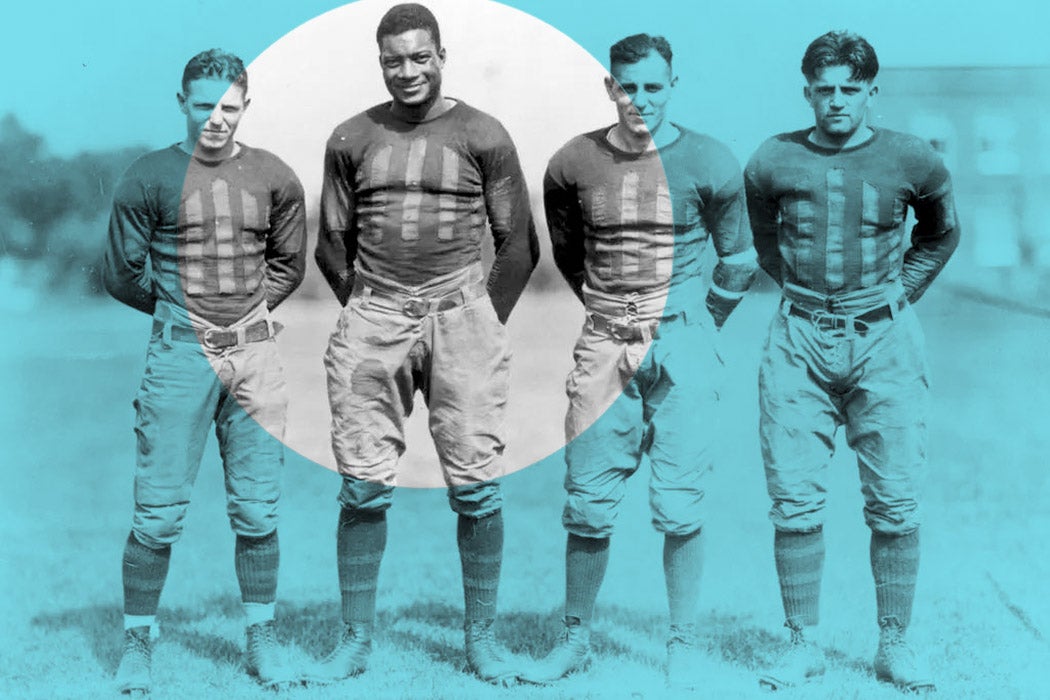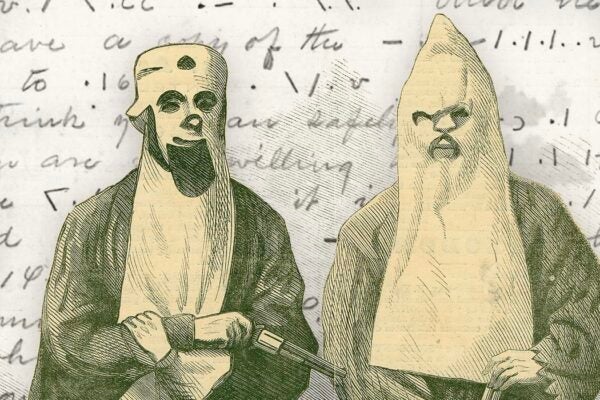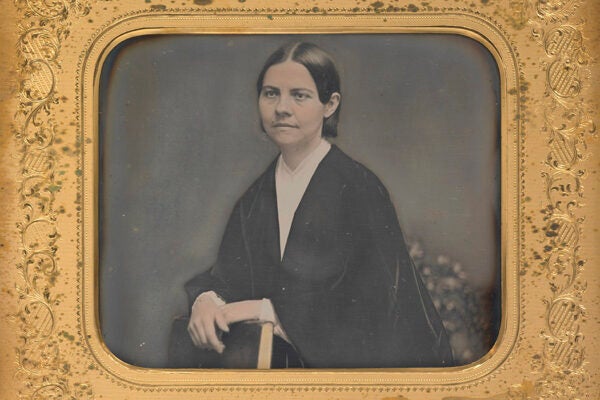Sophomore Jack Trice was the starting defensive tackle. Trice was Iowa State’s first Black student-athlete when he enrolled in 1922 and only one of about twenty Black students at the university in total. He’d been a member of Iowa State’s football team for a year, but this game—on October 6, 1923—was a big one. The previous season, he’d turned out with the freshman squad, as collegiate rules prohibited first-year students from competing in varsity games. But as historian of sport and physical activity Jaime Schultz writes, “Trice’s 6-foot, 200-pound frame and obvious skill impressed his teammates and coaching staff.” He had all the makings of a college star. However, his football career ended almost as soon as it began, as he suffered a tragic, mortal wound on the field that October day. Was his death just the outcome of a violent game, or was it the result of something more sinister—something connected to his race?
Trice was born in rural, mostly white Ohio in 1902. When he was in the eighth grade, his mother sent him to live with an uncle in the much bigger, more diverse Cleveland. There, at East Technical High School, Trice began to show his skills on the field. He led the team to an undefeated season his senior year, but despite being known as the team’s standout, “there is no evidence that any institutions sought Trice,” Schultz writes. His white teammates, on the other hand, were heavily recruited, not surprising considering “few institutions were willing to integrate their athletic teams during the first half of the twentieth century.” It’s likely that the offer he received from Iowa State was his only choice.
His first game, against Simpson College, was a good one. He played well, with one newspaper even heralding him as “one of the best tackles in the Missouri valley this year.” He was well on his way. In his second game, Iowa faced off against the University of Minnesota. It should be noted that while this was Trice’s second game, it wasn’t the second game of the season. As historian Donald Spivey explains, “three other teams had refused to play Iowa State,” and Trice sat out at least one game. But he was ready for Minnesota. A note he’d written to himself and tucked in his pocket during the game read, “Everyone is expecting me to do big things. I will! My whole body and soul are to be thrown recklessly about on the field tomorrow. Every time the ball is snapped, I will be trying to do more than my part.”
He was right about being thrown about; there were some vicious hits. As Spivey writes, “The blows were so violent that one spectator was heard to remark that he thought it was getting ready to rain.”
Trice took his share of those hits. In one of the first plays of the game, he already had a shoulder injury, but he continued to play.
“[B]y the end of the first half, both sides were battered, bruised, cut, and bleeding,” Spivey writes. But it was a play during the third quarter that changed everything.
Trice dove to stop an advancing Minnesota player and ended up on his back. After he was trampled by several others, he was taken off the field on a stretcher. Minnesota fans chanted “we’re sorry” over and over, but as Spivey explains, “It is questionable whether [they] were expressing sympathy or disdain.”
Trice was sent to the hospital, where doctors said his injuries weren’t serious; he was fine to travel back to Iowa. As Schultz writes, he made the trip back on “a makeshift straw mattress in a railroad car.” Once back in Iowa, he went to a local hospital, where his injured shoulder was determined to be a broken collarbone. His abdomen and intestines were “so severely damaged that it was too dangerous to operate,” Schultz writes. All damage that the doctors in Minnesota failed to detect.
Weekly Newsletter
Trice died from his injuries on October 8, 1923.
The controversy of Trice’s death has defined his story ever since. Though some accounts say that race played no factor in his injuries, others disagreed. The color-line was as strictly enforced in sports as it was in other aspects of American life, after all. And as Schultz notes, “when you added the ingredients of personal pride, valor, ethnicity, religion, sectionalism, or race, the game moved to a higher level of significance.” One member of the Iowa athletic staff recalled years later, “I was sure that was their purpose, to get him out of the game.”
Iowa State renamed its football stadium in honor of Trice in 1997, but the questions his death raised still remain. His final note keeps echoes of that mystery audible after all these years: “Be on your toes every minute if you expect to make good.”







